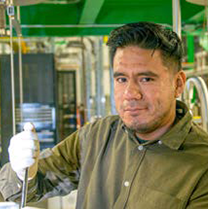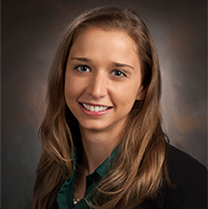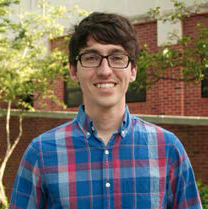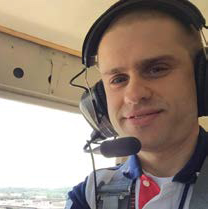Graduate student career paths
FRIB will help you launch an exciting career
Your success—both as a graduate student and in your future career—is important to us. Our graduates are in high demand, and they are the best testimony to the quality of our top-ranked graduate education program.
MSU’s PhD recipients who study at FRIB enjoy a 100 percent job placement rate thanks to our rigorous academics and strong national reputation. Recent FRIB Laboratory graduates now work on:
- Cancer therapy
- Environmental protection
- Weapons safeguards
- National security
- Nuclear fusion
- Radiation safety of space travel
Others have chosen careers where they apply their problem-solving and goal-oriented teamwork skills in diverse areas of the economy, including applied research and development, manufacturing, electronics, computing, and finance.
Career opportunities in nuclear science
As an FRIB-educated nuclear or accelerator physicist, engineer, or nuclear chemist, you are well-positioned to pursue a variety of career paths—from university research and education to establishing science policy to advancing medical breakthroughs.
With advanced training in nuclear science, you will be ready for such successful and rewarding careers as:
- Nuclear engineers design, develop, and operate nuclear power plants. They also develop new reactor designs and technologies to improve the efficiency and safety of nuclear power in sectors such as defense, medical applications, space exploration, and scientific inquiry.
- Radiochemists explore the interactions between nuclear materials and other chemical compounds and elements. They also work to develop new medicines, study DNA, and develop renewable energy sources in a range of fields, including pharmaceuticals, archaeology, nuclear medicine, and radiology.
- Cryogenic engineers design and develop systems that operate at extremely low temperatures. They work in a variety of industries, including aerospace, medicine, and research.
- Accelerator physicists design and develop particle accelerators. They also teach and mentor students and other scientists in research laboratories and universities.
- Nuclear chemists study the properties of radioactive chemical elements and their applications. They may pursue a teaching and research career at a university, or they may oversee a laboratory. Some find meaningful work in industries including pharmaceuticals, archaeology, and radiology.
- Nuclear astrophysicists bridge the gap between nuclei, which are among the tiniest objects in nature, and stars, which are among the largest, in order to understand the life cycle of stars or the origin of matter in the universe.
Alumni and student spotlights
MSU graduates who conducted their dissertation research at FRIB have gone on to hold important positions at universities, national laboratories, and in the private sector, making valuable contributions to society in many different areas. Below are just a few highlights of our recent alumni.
Crispin Contreras-Martinez, Engineering Physicist
PhD in Physics, 2021
 Crispin joined MSU’s Accelerator Science and Engineering Traineeship (ASET) program in October 2017, with Peter Ostroumov serving as his advisor. He studied the electromagnetic and mechanical properties of medium beta superconducting elliptical cavities. In his thesis project, Crispin sought to understand the limitations of fast tuners based on piezo actuators.
Crispin joined MSU’s Accelerator Science and Engineering Traineeship (ASET) program in October 2017, with Peter Ostroumov serving as his advisor. He studied the electromagnetic and mechanical properties of medium beta superconducting elliptical cavities. In his thesis project, Crispin sought to understand the limitations of fast tuners based on piezo actuators.
Superconducting linear accelerators (linacs) can provide high-power proton and ion beams in continuous-wave (CW) or pulsed-mode operation. Linacs have become an important research tool in many fields such as high-energy physics, nuclear physics, and materials science. Crispin is studying control algorithms and the development of reliable piezo tuning systems with long lifetime for applications both in CW and pulsed linacs.
With support from the ASET program, Crispin continues his research at Fermilab as an engineering physicist, working with collaborators who have extensive resonance-control experience. He is working to develop algorithms and hardware for his project and aims to present his results at international conferences such as the International Particle Accelerator Conference (IPAC), the Linear Accelerator Conference (LINAC), and the International Conference on Superconducting Radiofrequency (SRF).
In 2017, Crispin was one of fifty-two graduate students from across the nation selected for the Office of Science Graduate Student Research Program. The award supported his research under the supervision of a DOE laboratory scientist.
Kalee Fenker, Technical Advisor for DOE
PhD in Nuclear Chemistry, 2017

During her time at the National Science Foundation’s National Superconducting Cyclotron Laboratory (NSCL) at MSU from 2013 to 2017, Kalee’s research focused on heavy ion fusion reactions. She looked at how varying the neutron richness of the entrance channel components affected the reaction dynamics. She also built several parallel plate avalanche counters for the Coincidence Fission Fragment Detector, a device built to facilitate this type of research at NSCL.
After leaving NSCL, Kalee started working at Savannah River National Laboratory (SRNL). There, her team provided boutique radiochemical analyses for all facilities on the Savannah River site and several offsite customers across the U.S. Department of Energy complex. The result? Specialized radiochemical analyses for more than seventy-five different radioactive isotopes.
Today, she is a technical advisor for the Department of Energy.
Kalee said her time at NSCL was instrumental in her career path. “I use the nuclear science knowledge I gained at NSCL each day to help customers understand the radiochemical composition of their products.”
For Kalee, what stands out most from her time at FRIB/NSCL are all of the people she met while at the laboratory. “My advisor, Professor Dave Morrissey, went out of his way to help me with my project when I needed assistance.” She also values all that she learned while building their equipment in the detector laboratory. Plus, Kalee said she met many lifelong friends, including two of her bridesmaids, while at NSCL.
Zach Meisel, Data Scientist and Modeler
PhD in Nuclear Physics, 2015

From 2008 to 2015, Zach was a research assistant at the National Science Foundation’s National Superconducting Cyclotron Laboratory (NSCL) at MSU. While there, he studied the nuclear physics of extreme stellar environments under the guidance of Hendrik Schatz.
His day-to-day work at NSCL included analyzing data and developing components for an advanced charged particle detector. For his thesis experiment, Zach measured the mass of eighteen nuclei via the time-of-flight method at NSCL—seven of which were measured for the first time. For his thesis, “Extension of the Nuclear Mass Surface for Neutron-rich Isotopes of Argon through Iron,” Zach won the 2015 MSU Physics Department Sherwood K. Haynes Award for being the most outstanding graduate student in physics or astrophysics.
In 2015, Zach continued his postdoctoral research at the University of Notre Dame, where his primary responsibilities were commissioning and performing the first science experiments with the St. George Recoil Separator. Zach went on to become an associate professor of physics and astronomy and director of the Edwards Accelerator Laboratory at Ohio University, working on the origin of the elements and the behavior of matter at extreme densities and low temperatures.
Today, Zach works as a data scientist and modeler for a private organization servicing national security, health and life sciences, and energy and environmental industries. Through his work, Zach develops and applies physical models and associated technical analyses for chemical, biological, radiological, nuclear, and high-yield explosives (CBRNE) preparedness and response planning.
Zach is a member of the Institute of Nuclear and Particle Physics, as well as the Joint Institute for Nuclear Astrophysics. In 2018, he received a U.S. Department of Energy Office of Science Early Career Research Program award.
Scott Suchyta, Senior Scientist
PhD in Chemistry, 2014

As a graduate student, Scott worked with Sean Liddick at the National Science Foundation’s National Superconducting Cyclotron Laboratory (NSCL) at MSU. Specifically, Scott worked in the Decay Spectroscopy Group and engaged with students in other activities, such as the Women and Minorities in Physical Sciences program (WaMPS).
In 2014, Scott continued as a postdoctoral scholar at University of California (UC) Berkeley, working with the Ultra-High-Rate Germanium Detector to measure, record, and analyze data using C++ or MATLAB. At UC Berkeley, Scott worked with the COHERENT collaboration, writing software (primarily with C++/ROOT) to optimize various neutron-gamma pulse-shape discrimination techniques for liquid scintillator detectors.
Separately at UC Berkeley, Scott oversaw the work of several undergraduate research students in the RadWatch program. These students monitored radioactivity in the environment through measurements. Scott also initiated a new project to determine the amount of Po-210 (a pure alpha emitter) in organic samples. The quantification requires the use of a radioactive tracer; Scott accordingly established a small radiochemistry lab space implementing proper safety measures for handling radioactive liquids, leading to the first measurements being made.
Since 2016, Scott has worked as a senior scientist at the Remote Sensing Laboratory (RSL) located at Joint Base Andrews. At RSL, DOE radiological/nuclear emergency response efforts are supported, and Scott is currently engaged in the Aerial Measuring System (AMS), Nuclear Search Program (NSP), and Consequence Management (CM) programs.
Get started at Michigan State University
Your future career in nuclear science starts at Michigan State University’s Facility for Rare Isotope Beams (FRIB) and the National Science Foundation’s National Superconducting Cyclotron Laboratory (NSCL). Get started by requesting more information.
